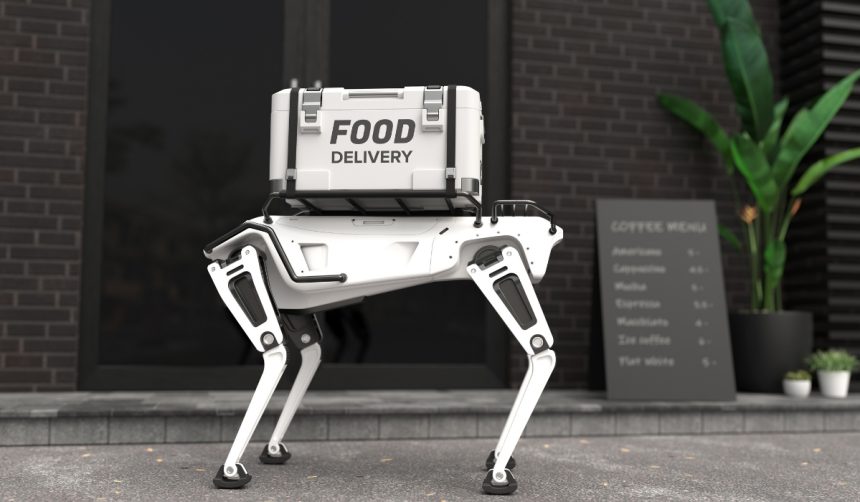A new industrial collaboration is preparing to test advanced robots in shipbuilding environments, as NEURA Robotics joins forces with HD Hyundai Samho and HD Hyundai Robotics. These companies aim to address operational challenges and rising labor shortages by introducing specialized quadruped and humanoid robots into the demanding context of shipyard operations. The initiative not only targets greater efficiency but also aspires to create safer working environments for employees, potentially impacting standards in heavy industry. Relying on a blend of German engineering and Korean manufacturing know-how, the partnership intends to validate these robots under real-world conditions before they enter wider service. NEURA’s recent expansion into various strategic collaborations further signals a broadening landscape for cognitive robotics.
Earlier reports on robotics in industrial sectors referenced projects focusing on automation for repetitive or hazardous jobs, but most lacked a combined emphasis on both humanoid capabilities and integration into shipyard-scale operations. Recent collaborations in robotics have spotlighted mobility and AI, though few offered specialized solutions for welding and other shipbuilding-specific tasks. Industry observers have pointed out that while other robot brands targeted logistics and general assembly, NEURA Robotics and HD Hyundai are shifting attention to purpose-built humanoids and addressing sector-specific industrial safety. Past challenges noted by robotics companies concerned the reliability of deploying complex robots in unpredictable environments; this initiative plans to tackle those by leveraging extensive operational testing and cross-company expertise.
Will Purpose-Built Robots Redefine Shipyard Productivity?
By integrating NEURA Robotics’ cognitive technology with Hyundai’s experience in shipbuilding and welding automation, the partnership will explore applications such as welding, inspection, and routine maintenance. Each party is contributing distinctive resources: HD Hyundai Samho will provide testing platforms and evaluate on-site usability, HD Hyundai Robotics will supply automation experience and technical validation, while NEURA Robotics will focus on developing and commercializing humanoid platforms, particularly their 4NE1 model. The participants emphasize ambitions beyond basic efficiency, suggesting a significant effect on workplace safety and operational consistency. Industry shortages of skilled workers have accelerated interest in robotic solutions; the partners suggest this trend will only gain momentum.
How Do NEURA’s Industry Alliances Expand its Strategy?
NEURA Robotics is not limiting its activity to shipyards. The firm recently secured agreements with major technology companies such as Vodafone for 5G support, NVIDIA for AI and simulation, and SAP for digital business solutions. These collaborations are positioned to strengthen the company’s capacity for innovation and address logistical and technical hurdles seen at events like Automatica. In addition to joint efforts with manufacturing giants like Omron, Kawasaki, and Delta Electronics, NEURA is extending its cognitive robotics ecosystem. These steps underline their commitment to multi-industry deployment, even as the operational debut of its 4NE1 robot faced logistical setbacks at major trade shows.
Can These Technologies Maintain Industry Competitiveness?
Project leaders from all involved companies expect the new robots to enhance safety and productivity across shipyard operations.
“We will take a leading role in creating a safer and more productive shipyard environment by applying specialized welding robots that meet the diverse quality requirements of the shipbuilding industry,”
said Sanghun Ryu, executive director at HD Hyundai Samho. The intention is also to increase the global competitiveness of the shipbuilding sector by setting new standards in high-risk task automation and workforce support. External industry competition remains intense, with other Korean and international companies investing in robotics for their own shipbuilding facilities, but this project’s focus on both cognitive technology and practical application differentiates it from previous efforts.
Strategic alliances between NEURA Robotics, HD Hyundai Samho, and HD Hyundai Robotics reflect a targeted response to sector labor shortages and rapidly advancing automation technology. By developing and testing the 4NE1 humanoid and quadruped robots in authentic shipbuilding contexts, the companies are aiming for not just technological demonstration but proven operational benefits. Remaining challenges include system durability, seamless integration, and consistent performance in unpredictable environments. As robotic technology adoption increases in heavy industries, practical demonstration of reliability, safety, and cost-effectiveness will be essential to widespread acceptance. For organizations considering such collaborations, close alignment between software, industrial design, and field operations remains crucial, as does ongoing feedback from operational trials.










